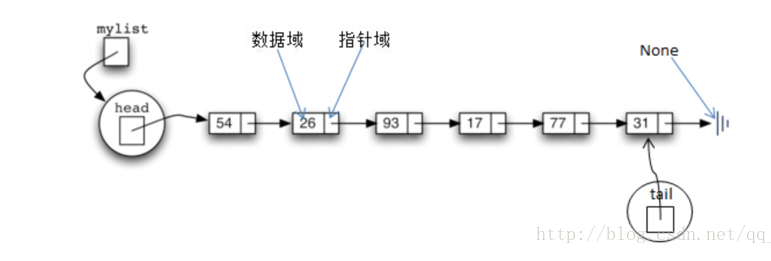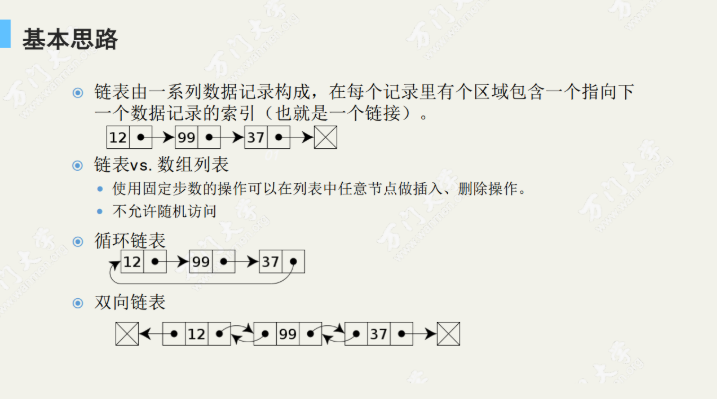什么是时间复杂度
时间频度:一个算法执行所耗费的时间,从理论上是不能算出来的,必须上机运行测试才知道。但是我们不可能也没有必要对每一个算法都进行上机测试,只需要知道那个算法花费的时间多,那个算法花费得到时间少就可以了。并且一个算法花费的时间与算法中语句 的执行次数成正比。那个算法的语句执行次数多,他花费的时间就多,一个算法中的语句的执行次数成为语句的频度或时间频度,记为T(n)。
时间复杂度:在刚才提到是时间频度中,n称为问题的规模,当n不断变化时,时间频度T(n)也会不断变化,但有时我们想知道它的变化呈现什么规律,为此,引入时间复杂度的概念。一般情况下,算法中基本操作重复执行的次数是问题规模n的某个函数,用T(n)表示,若有某个辅助函数f(n),使得当n趋近于无穷大时,T(n)/f(n)的极限值为不等于零的常数,则称f(n)是T(n)的同数量级函数,记作T(n)= O(f(n)),称O(f(n))为算法的渐进时间复杂度,简称为时间复杂度。
常见的算法时间复杂度由小到大排序:Ο(1)<Ο(log2n)<Ο(n)<Ο(nlog2n)<Ο(n2)<Ο(n3)<…<Ο(2n)<Ο(n!)
一般情况下,对一个问题(或一类算法)只需选择一种基本操作来讨论算法的时间复杂度即可,有时也需要同时考虑几种基本操作,甚至可以对不同的操作赋予不同的权值,以反映执行不同操作所需的相对时间,这种做法便于综合比较解决同一问题的两种完全不同的算法。
求解算法的时间复杂度的具体步骤是:
⑴ 找出算法中的基本语句;
算法中执行次数最多的那条语句就是基本语句,通常是最内层循环的循环体。
⑵ 计算基本语句的执行次数的数量级;
只需计算基本语句执行次数的数量级,这就意味着只要保证基本语句执行次数的函数中的最高次幂正确即可,可以忽略所有低次幂和最高次幂的系数。这样能够简化算法分析,并且使注意力集中在最重要的一点上:增长率。
⑶ 用大Ο记号表示算法的时间性能。
将基本语句执行次数的数量级放入大Ο记号中。
如果算法中包含嵌套的循环,则基本语句通常是最内层的循环体,如果算法中包含并列的循环,则将并列循环的时间复杂度相加
# 时间复杂度是O(10) for i in range(10): print(i) # 时间复杂度是O(10*10) for i in range(10): for j in range(10): print(j) # 一起的时间复杂度是 O(10)+O(10*10)
什么是链表
链表是一种常见的基础数据结构,但是不会线性的顺序存储数据,而是每一个节点里存储下一个节点的指针(Pointer),由于不必按照顺序存储,链表在插入的时候可以达到O(1)的复杂度,比起另一种线性表顺序快得多,但是查找一个节点或者访问特定编号的节点则需要O(n),的时间,而顺序表相应的时间复杂度分别是O(n)和O(1)。
链表的特点
使用链表结构可以克服数组链表需要预先知道数据大小的缺点,链表结构可以充分利用计算机内存空间,实现灵活的内存动态管理,但是链表失去了数组随机读取的优点,同时链表由于增加了节点的指针域,空间开销比较大。
链表的基本结构

链表的种类


python 实现单链表
class Node(object): def __init__(self, data, pnext=None): # 初始化节点 self.data = data self.next = pnext def __repr__(self): # 打印节点信息 return str(self.data) class LinkList(object): def __init__(self): self.length = 0 self.head = None def is_empty(self): # 判断是否为空 return self.length == 0 def append(self, data_or_node): # 尾插 # 判断参数信息 if isinstance(data_or_node, Node): item = data_or_node else: item = Node(data_or_node) if not self.head: # 头指针为空 self.head = item self.length += 1 else: # 指向头指针所指地址 node = self.head while node._next: node = node._next node._next = item self.length += 1 def insert(self, value, index): # 插入节点 if type(index) is int: if index > self.length or index < 0: print("index is out of index") return else: if index == 0: self.head = Node(value, self.head) else: current_node = self.head while index-1: current_node = current_node.next index -= 1 i_node = Node(value, current_node.next) current_node.next = i_node self.length += 1 return else: print("Index is invaliable") def delete(self, index): # 删除索引位置结点 if type(index) is int: if index >= self.length or index < 0: print("index is out of index") return else: if 0 == index: self.head = self.head.next else: node = self.head while index-1: node = node.next index -= 1 node.next = node.next.next self.length -= 1 return else: print("Index is not int") def update(self, value, index): # 更新结点 if type(index) is int: if index >= self.length or index < 0: print("index is out of index") return else: node = self.head while index: node = node.next index -= 1 node.data = value return else: return def get_value(self, index): # 获取结点value if type(index) is int: if index >= self.length or index < 0: print("index is out of index") return else: node = self.head while index: node = node.next index -= 1 return node.data else: return def get_length(self): # 获取长度 node = self.head length = 0 while node: length += 1 node = node.next print("length is ", length) print("self.length is ", self.length) def clear(self): # 清空链表 self.head = None self.length = 0 print("Clear!") def print_list(self): # 打印链表 if self.is_empty(): print("Link is empty") else: node = self.head while node: print node.data, "-->", node = node.next print if __name__ == '__main__': l = LinkList() ele = Node(2) l.append(ele) l.insert(1,1) l.insert(2,2) l.insert(3,2) # print l.get_value(2) print l.print_list()